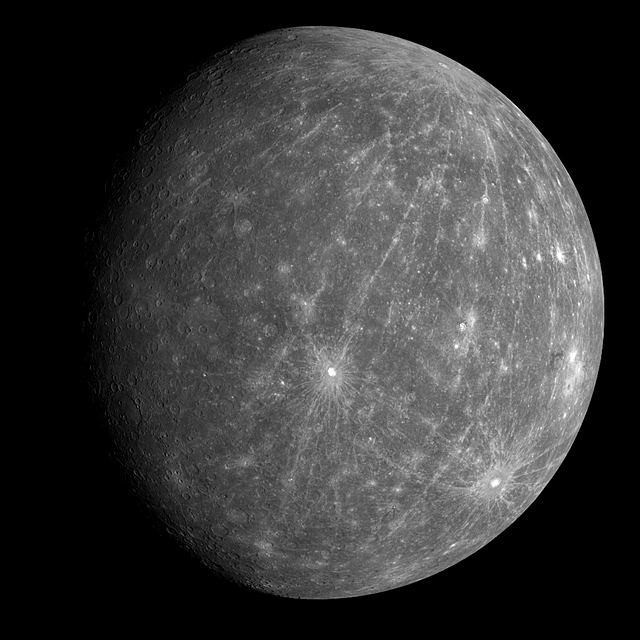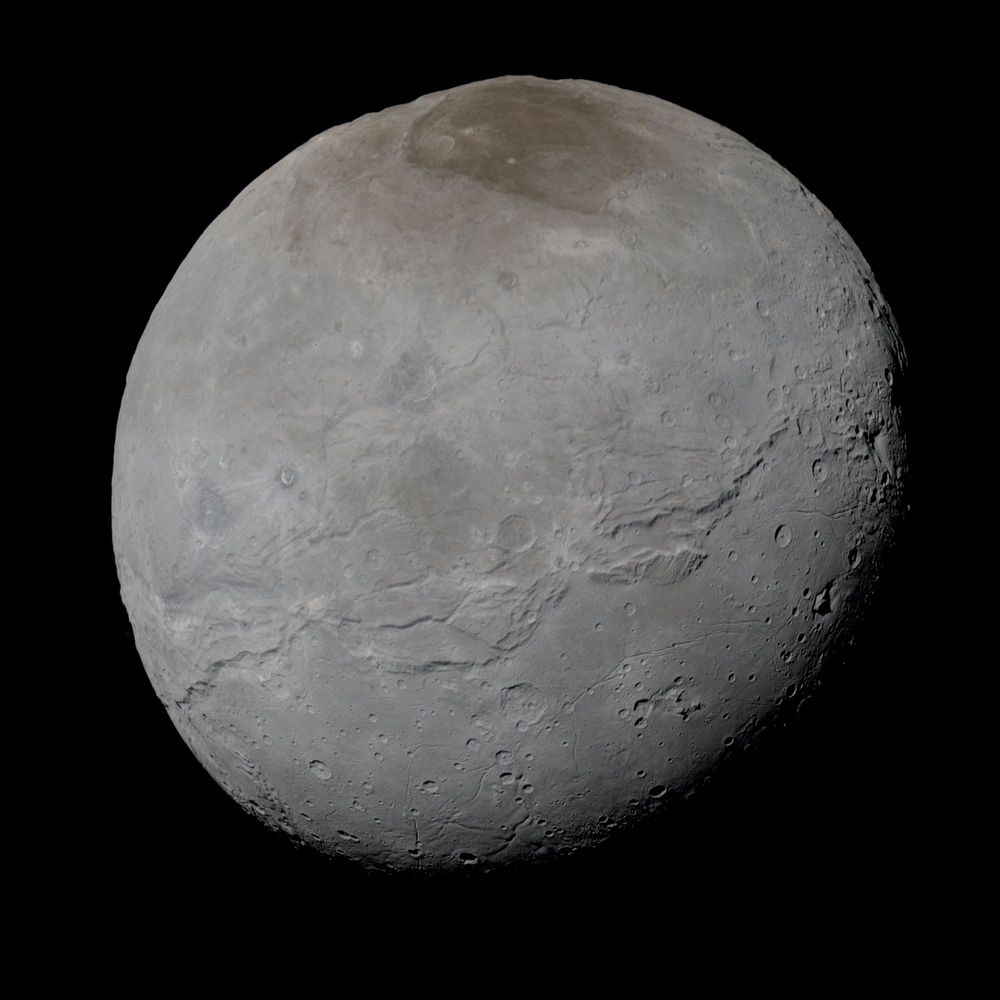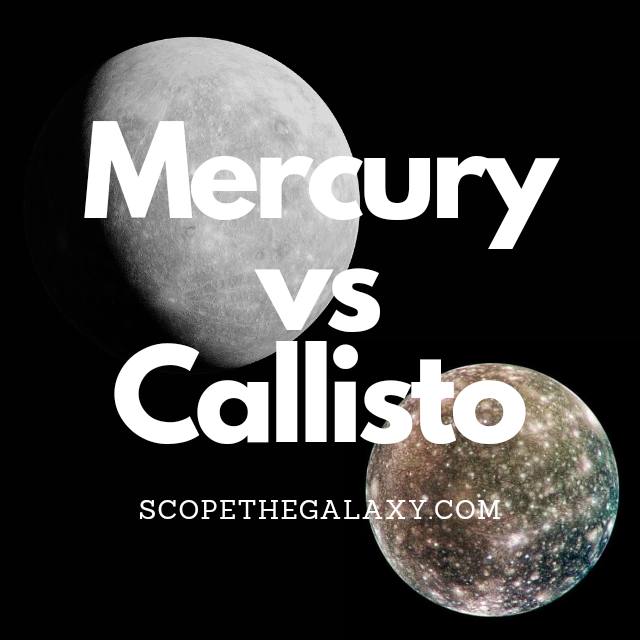*This post may contain affiliate links. This means we may make a commission if you purchase an item using one of our links*
The main differences between Mercury and Charon would be that Mercury is the planet closest to the Sun whilst Charon is joint 9th farthest (with Pluto) from the Sun, Mercury is far hotter at 167°C whilst Charon is far coolder achieving temperatures of -253°C and Mercury is bigger with a diameter of 4,879km whilst Charon’s diameter is 1,212km.
There are various other differences between the two, so continue reading for a more detailed look at each celestial body below along with their similarities and differences.
What Is The Planet Mercury?
Table of Contents

Mercury is the planet closest to our Sun and would fall under the terrestrial planet moniker. Out of the 8 main line planets Mercury is also the smallest, coming in at 4,879km.
This planet is known for having its fair share of craters, which is mostly down to its thinner non protective atmosphere that is unable to stop interstellar debris from striking its surface.
Despite its close proximity to the Sun, Mercury is not the hottest planet in our solar system but, it does come in second, just behind Venus. It’s surface temperature is around 430 degrees on the upper end with the average temperature around 167 degrees Celsius whereas its core is far hotter at around 1,600 – 3,000 degrees Celsius.
Due to it close proximity to our local star, Mercury is unable to sustain a moon around its orbit and even has a very unique rotation around the Sun where it has 3:2 orbital resonance with the Sun.
As for how long it takes for the planet to rotate around our yellow dwarf star, its the shortest time period of 88 days for obvious reasons, whilst a single day on the planet takes 58.65 Earth days to complete. Its axial tilt is only 2 degrees to the right, making it amongst the straightest planets in the solar system too.
What Is The Moon Charon?

Charon is the largest of Pluto’s moons, first discovered on 22nd June 1978. The surface of this icy world is frozen with nitrogen and methane ice; it may also hold some water ice. While Pluto possesses a reddish hue, Charon is closer to a neutral shade of grey; this suggests the two bodies have different compositions.
Scientists named this moon after the mythical ferryman, Charon, who once carried souls across the Acheron river. This river is one of five legendary rivers that could lie beneath the surface of Pluto.
The formation of Charon remains something of a mystery to scientists. However, this moon may have formed around 4.5 billion years ago when an object traveling at immense speed collided with Pluto. Its average distance from the Sun is approximately 3.6 billion km.
Charon is almost half the size of its planet at 1,212km, where scientists refer to these two bodies as a “double dwarf planet system,” and the chilly temperatures vary from minus 23 to minus 258 degrees Celsius.
Charon takes 153 hours to orbit its planet at an average distance of 19,640km, and it is tidally locked, meaning the same side of the moon always faces Pluto. Pluto also experiences a tidal lock to Charon, so the same two sides always face one another.
Among the fascinating features of this ice moon are the ice volcanoes that could exist on the surface. Observations from the Gemini observatory suggest that Charon could have a form of cryovolcanism known as ice-particle geysers.
The frigid world also has a canyon between seven and nine kilometers deep. (To put that into perspective, Mount Everest has a height of 8.8km).
Similarities Between Mercury And Charon
Charon and Mercury do have a few similar features, which would include the below:
- Both have a hotter central core.
- Both are terrestrial based entities.
- Both have an atmosphere and a rocky surface.
- Both are spherical in shape.
- Both have no other objects orbiting them.
- Both have no rings surrounding them.
Differences Between Mercury And Charon
In regards to the differences between the two, they include the following:
- Charon is smaller with a diameter 1,212km compared to Mercury’s 4,879km.
- Mercury is a planet whilst Charon is a natural satellite.
- Venus orbits the Sun in a nearly circular pattern whilst Charon orbits Pluto and Sun elliptically.
- A day on Mercury takes 55.65 days whilst a day on Charon is 153 hours.
- Mercury orbits the Sun in 88 days whilst Charon orbits the Sun in 247.78 years.
- Mercury has an axial tilt of 2 degrees whilst Charon’s axial tilt is straighter in comparison.
- Charon’s average temperature is -23 to -253 degrees Celsius whilst Mercury’s average is 167 degrees Celsius.
- Charon’s atmosphere is near enough non-existent whilst Mercury’s atmosphere is composed of oxygen, sodium and hydrogen.
- Charon’s gravity is 0.288 m/s² compared to Mercury’s that is 3.7 m/s².
- Mercury’s mass is 3.285 × 10^23 kg whilst Charon’s mass is 1.58×10^21 kg.
- Charon has a density of 1.71 g/cm³ whilst Mercury’s density is 5.43 g/cm³.
Summary
Mercury and Charon do have their fair share of similar features whether it be their compositional structure, their weak atmospheres and the lack of moons that orbit either of them.
Nevertheless, they are still very different whether it be in regards to their size, mass, density, their length of days and more, which is why both still function very differently from one another and ultimately fall under completely entity brackets within our solar system where one is an officially recognized planet and the other.

